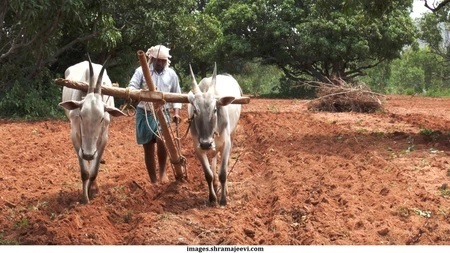Soil Compaction is reduction in soil volume and change in soil form (reduction in soil pore/aeration). It occurs when soil is subject to stresses of agricultural machinery. As farm tractors, combines have become larger, they have also gotten heavier weighing as much as 15-20 tonnes when loaded with manure etc.

Compaction of soil has a significant impact on crop yield and increased water-runoffs. Lack of air changes soil chemistry (reducing pH etc) that is unfavorable for available nutrient uptake.

Here are 3 ways to control / minimize compaction: 1. Maintain Organic Matter – Increased organic matter makes soil aggregates stronger so they can better support increased traffic with less compaction. Practicing crop rotation and mulching helps increase organic matter. Regular use of Jeevamrit and panchgavya help keep the eco-system of soil alive and encourage earthworms. 2. Chose bullocks over tractors – Tillage can either create or help to alleviate soil compaction. By definition, tillage operations break up soil into smaller particles, aerating the soil. However, heavy/excessive tillage may pulverize soil stucture that provides desirable pore space. Delicate walk of the bulls is powerful yet not-damaging to the soil.

3. Well-Drained Soils – It is a well tested fact that pressure on wet soils leads to more compaction than dry soil, Hence it is advised to keep soils well drained. The way nature has designed the ecology, livestock breeds in hilly and wetter areas weigh lesser than dry and sandy soils where compaction is negligible. This adaptability of local bullocks make them ideal for tilling.

